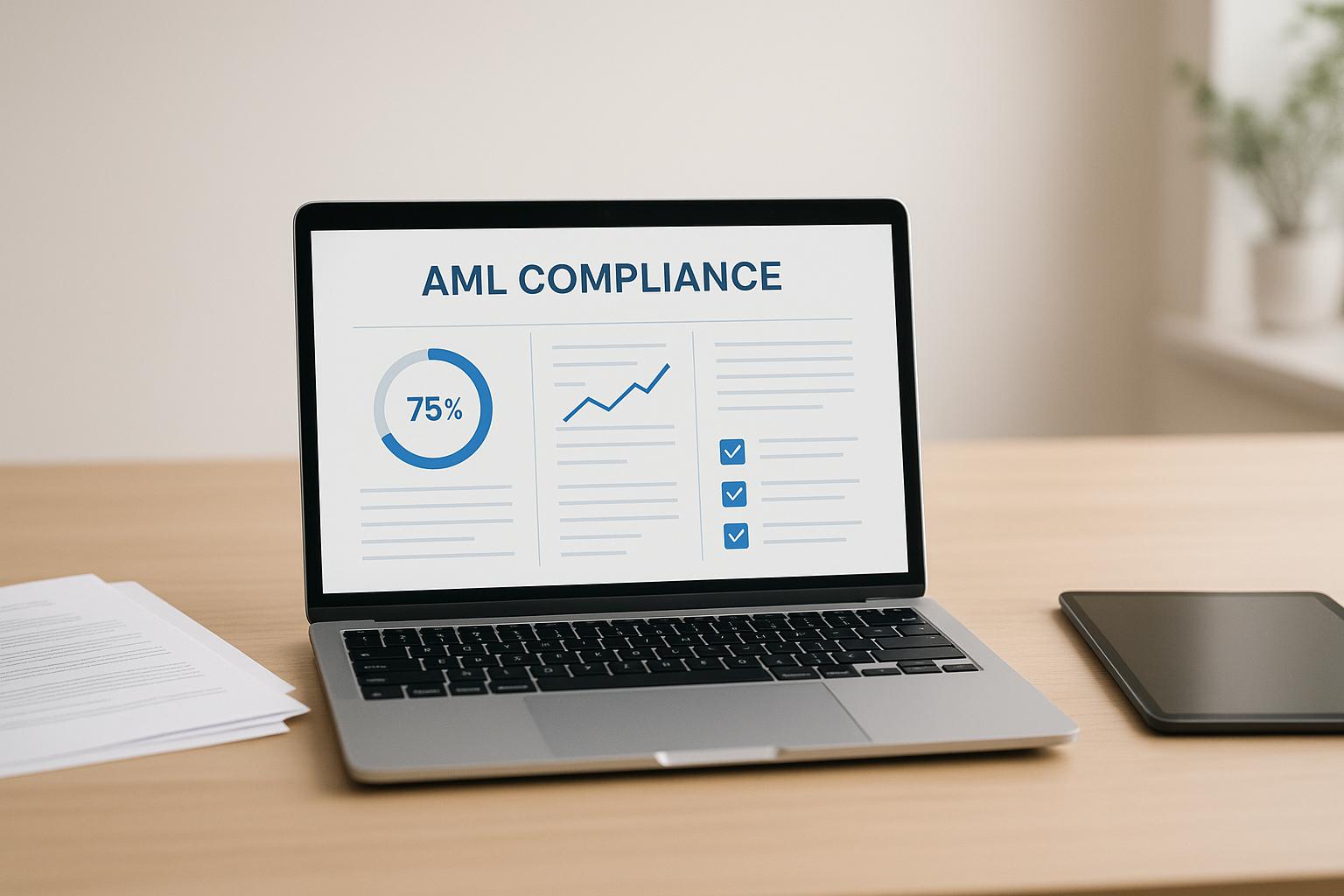Delivering real-time streams with high quality and minimal delay is a balancing act. Viewers expect sharp visuals without interruptions, but prioritizing one often affects the other. Here’s how to manage both effectively:
- Choose the right codec: H.264 is fast and widely supported, while H.265 and AV1 offer better compression but need more processing power.
- Adapt to network conditions: Use Adaptive Bitrate Streaming (ABR) to adjust video quality dynamically during network fluctuations.
- Use fast protocols: WebRTC ensures ultra-low latency (200-500ms), while LL-HLS provides low latency with better scalability.
- Optimize your setup: Match resolution and bitrate to your content type (e.g., sports vs. webinars).
- Leverage CDNs and edge servers: Reduce delays by delivering content from servers closer to viewers.
- Secure your streams: Use tools like watermarking and blockchain verification to protect content without adding delays.
The key is balancing technical setups with content protection to deliver smooth, reliable, and secure streams. Keep reading for detailed steps and strategies.
Low Latency, High Stakes: Delivering Real-Time Streams at Scale
Main Elements that Impact Stream Performance
Several factors – such as the codec used, network quality, device capabilities, and geographic location – play a critical role in shaping real-time streaming performance.
Video Codec Selection
The choice of video codec directly impacts both video quality and processing speed. Here are three commonly used codecs:
- H.264/AVC: Widely supported, offering efficient compression with minimal processing demands.
- H.265/HEVC: Provides better compression than H.264, but requires more processing power.
- AV1: Delivers the best compression rates but demands significantly higher processing power.
Your codec selection determines how quickly the video can be encoded at the source and decoded on viewers’ devices. For example, while H.265 is more efficient at lower bitrates, its higher processing requirements may lead to delays on less powerful devices.
Network Requirements
Network performance is another key factor, influenced by:
- Upload bandwidth at the source and download speeds on the viewer’s end.
- The network’s ability to handle congestion and sudden traffic changes.
Adjusting streaming settings to match current network conditions can help maintain quality during periods of instability or variability.
Device and Location Effects
Viewer devices and their geographic location also play a role in stream performance. Factors include:
- Device capabilities: Processing power, screen resolution, and available memory all affect decoding speed and buffering.
- Geographic factors: Proximity to servers, local network quality, and regional bandwidth availability can influence the viewing experience.
Using adaptive bitrate streaming (ABR) ensures the stream’s quality dynamically adjusts to match these varying conditions. This approach helps deliver a smooth experience across different devices and locations.
Stream Settings Setup
Fine-tune your streaming setup to strike the perfect balance between quality and latency.
Bitrate and Resolution Setup
Your bitrate and resolution settings depend on the type of content you’re streaming. High-motion content, like sports, demands higher bitrates to maintain sharp visuals. Here’s a quick reference guide:
| Content Type | Resolution | Recommended Bitrate | Ideal For |
|---|---|---|---|
| Webinars/Presentations | 720p (1280×720) | 2-3 Mbps | Static visuals or occasional screen sharing |
| Sports/Action | 1080p (1920×1080) | 4-6 Mbps | Fast-paced content needing clear detail |
| General Live Events | 1080p (1920×1080) | 3-4 Mbps | A balanced option for most scenarios |
Start with these settings and adjust based on your network’s performance.
Dynamic Quality Adjustment
Most streaming platforms use Adaptive Bitrate Streaming (ABR) to handle network fluctuations. ABR continuously monitors bandwidth and connection stability, automatically adjusting video quality to prevent interruptions. This ensures smoother playback, even when your network conditions change.
To make the most of ABR, configure multiple quality levels for seamless transitions. You’ll also need to choose streaming protocols that prioritize speed.
Fast Streaming Protocols
For low-latency streaming, WebRTC and LL-HLS (Low-Latency HTTP Live Streaming) are top choices:
-
WebRTC
- Delivers ultra-low latency (200-500ms)
- Adapts to network changes automatically
- Supported natively in most browsers
-
LL-HLS
- Offers consistent 2-3 second latency
- Scales effectively for large audiences
- Works well with Content Delivery Networks (CDNs)
Adjust your encoder settings to match the protocol. For WebRTC, set a keyframe interval of 2 seconds or less to allow rapid quality adjustments. For LL-HLS, aim for a segment duration of 2 seconds with partial segments at 0.5 seconds for the best results.
sbb-itb-738ac1e
Network Setup for Better Streaming
Set up your network to ensure smooth, high-quality streaming with minimal delays. Here are some effective ways to enhance your streaming network.
Using a CDN
A Content Delivery Network (CDN) can boost streaming performance by storing and delivering content from servers located closer to your audience. To get the best results, consider a multi-CDN approach. This involves using local Points of Presence (PoPs), smart load balancing, and dynamic caching. These techniques help reduce delays and improve the overall streaming experience.
Advantages of Edge Servers
Edge servers take things a step further by reducing the physical distance between your content and your viewers. By placing these servers in key locations – like major cities or high-demand regions – you can:
- Cut down on data travel distance
- Decrease latency and enhance stream reliability
Placing edge servers in areas with heavy traffic ensures your service stays responsive, even during busy periods.
Prioritizing Streaming Traffic
Managing network traffic is just as important as distribution. To avoid buffering and interruptions, try these methods:
- Use Quality of Service (QoS) tags to make sure streaming packets get priority
- Allocate dedicated network resources and manage buffers to handle congestion effectively
These steps can help maintain a seamless streaming experience, even when network demand is high.
Content Protection Methods
Securing your content is just as important as optimizing for quality and latency, especially when it comes to real-time streaming. Effective protection tools ensure your streams stay safe while delivering high-quality video with minimal delay.
ScoreDetect Watermarking

ScoreDetect uses invisible watermarking to protect your streams without compromising quality or latency. These hidden markers are embedded directly into your content, helping you safeguard your intellectual property.
"ScoreDetect is exactly what you need to protect your intellectual property in this age of hyper-digitization. Truly an innovative product, I highly recommend it!" – Imri, CEO of a Startup SaaS company
Blockchain Content Verification
ScoreDetect also leverages blockchain technology to verify your content. On average, it processes verification certificates in just 3.465 seconds [1]. The system generates a secure checksum of your stream, records it on the SKALE blockchain with zero gas fees, and provides a certificate containing transaction details.
"As a SaaS company owner, I find ScoreDetect to be a highly valuable tool for ensuring the integrity of our digital content." – Joshua Chung, CEO of Startup Consultancy
With blockchain ensuring your content’s authenticity, other real-time measures continuously protect your stream during broadcasts.
Live Stream Protection
Real-time protection is critical for live broadcasts. ScoreDetect monitors your streams to detect and remove unauthorized copies, achieving a 96% success rate in takedowns [1]. Key features include:
- 24/7 monitoring for content and brand protection
- Automated takedown notifications
- Dedicated success manager for personalized support
- Premium enterprise support available around the clock
Protection is applied almost instantly, and for added convenience, ScoreDetect integrates with over 6,000 web applications via Zapier. This makes streamlining your content protection workflows easier than ever.
Conclusion
Delivering high-quality real-time streams with minimal delay involves fine-tuning codecs, optimizing networks, and safeguarding content. Choosing the right video codec, improving network performance, and adjusting stream settings are key steps for content creators to achieve seamless streaming.
Technologies like CDNs and edge servers play a big role in reducing latency while maintaining quality. Paired with traffic prioritization, these tools ensure steady performance across different regions and under changing network conditions.
Once network performance and delivery are optimized, securing your content becomes crucial. Tools like ScoreDetect’s blockchain verification and invisible watermarking show how modern security measures can protect content without sacrificing stream quality. The blockchain technology enables quick content verification while keeping streaming performance intact.
Effective real-time streaming means finding the right balance between performance and protection. By combining advanced security features with optimized delivery methods, creators can provide the smooth, low-latency experience audiences expect – while keeping their content secure. Together, these elements create a strong foundation for reliable and secure real-time streaming.
FAQs
How does selecting the right codec affect video quality and latency in real-time streaming?
The choice of codec plays a crucial role in balancing video quality and latency during real-time streaming. Codecs compress video data to reduce file size, but different codecs prioritize either quality or speed. For example, codecs like H.264 are widely used for their efficient compression and compatibility, offering a good balance between quality and latency.
However, higher compression or advanced codecs like HEVC (H.265) may deliver better quality but can introduce additional encoding delays, potentially increasing latency. To achieve the right balance, consider your streaming purpose and audience requirements. For low-latency needs, opt for codecs optimized for real-time performance while adjusting settings like bitrate and resolution to maintain acceptable quality.
What are the benefits of Adaptive Bitrate Streaming (ABR) for maintaining video quality during unstable network conditions?
Adaptive Bitrate Streaming (ABR) offers several benefits for ensuring a smooth streaming experience, even during network fluctuations. By dynamically adjusting the video quality based on the viewer’s internet speed, ABR minimizes buffering and ensures uninterrupted playback.
With ABR, viewers can enjoy the best possible quality their connection can handle, enhancing user satisfaction. This technology is especially valuable for real-time streaming, as it helps balance low latency and consistent quality, even when network conditions change unexpectedly.
How can blockchain and watermarking protect live streams without compromising performance?
Blockchain and watermarking can work together to protect live streams by ensuring robust copyright protection while maintaining performance. Blockchain technology captures a unique checksum of your content, creating an immutable proof of ownership without storing the actual digital assets. This ensures your intellectual property is safeguarded without impacting the speed or quality of your stream.
Invisible, non-invasive watermarking adds an extra layer of protection by embedding undetectable markers into the live stream. These markers prevent unauthorized use while remaining unnoticeable to viewers, ensuring a seamless streaming experience. By combining these technologies, you can protect your live streams effectively without affecting latency or quality.

